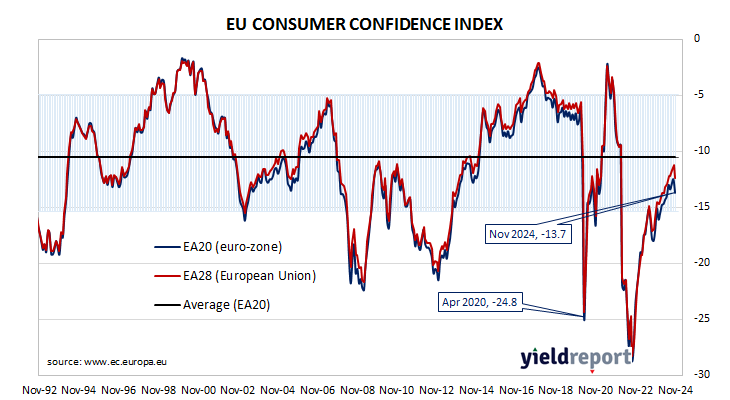Summary: Euro-zone consumer sentiment deteriorates in November, below expectations; consumer confidence index below long-term average; Westpac: improvement in confidence slows to negligible rate; euro-zone bond yields move inconsistently.
EU consumer confidence plunged during the GFC and again in 2011/12 during the European debt crisis. After bouncing back through 2013 and 2014, it fell back significantly in late 2018 but only to a level which corresponds to significant optimism among households. Following the plunge which took place in April 2020, a recovery began a month later, with household confidence returning to above-average levels from March 2021. However, readings subsequent to early 2022 were extremely low by historical standards until recently.
Consumer confidence deteriorated in November after improving over the previous two months, according to the latest survey conducted by the European Commission over the first three weeks of the month. Its Consumer Confidence Indicator recorded a reading of -13.7, below the generally expected figure of -12.4 and down from October’s reading of -12.5. This latest reading is below the long-term average of -10.5 but it is still above the lower bound of the range in which “normal” readings usually occur.
“Over the past six months, the improvement in confidence has slowed to a negligible rate having recovered from a low of -28.6 in 2022,” said Westpac senior economist Pat Bustamante. “Growth and the labour market is favourable in aggregate, but conditions are mixed by country.”
Sovereign bond yields in major euro-zone bond markets moved inconsistently on the day. By the close of business, the German 10-yar yield had lost 4bps to 2.31% while the French 10-year yield finished unchanged at 3.11%.


